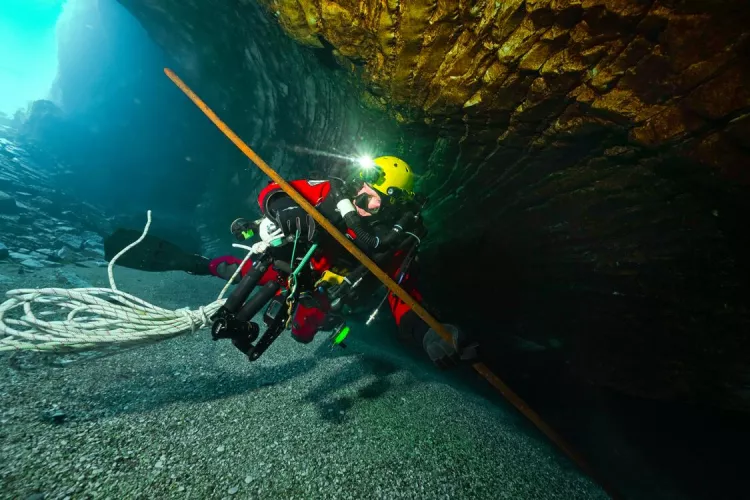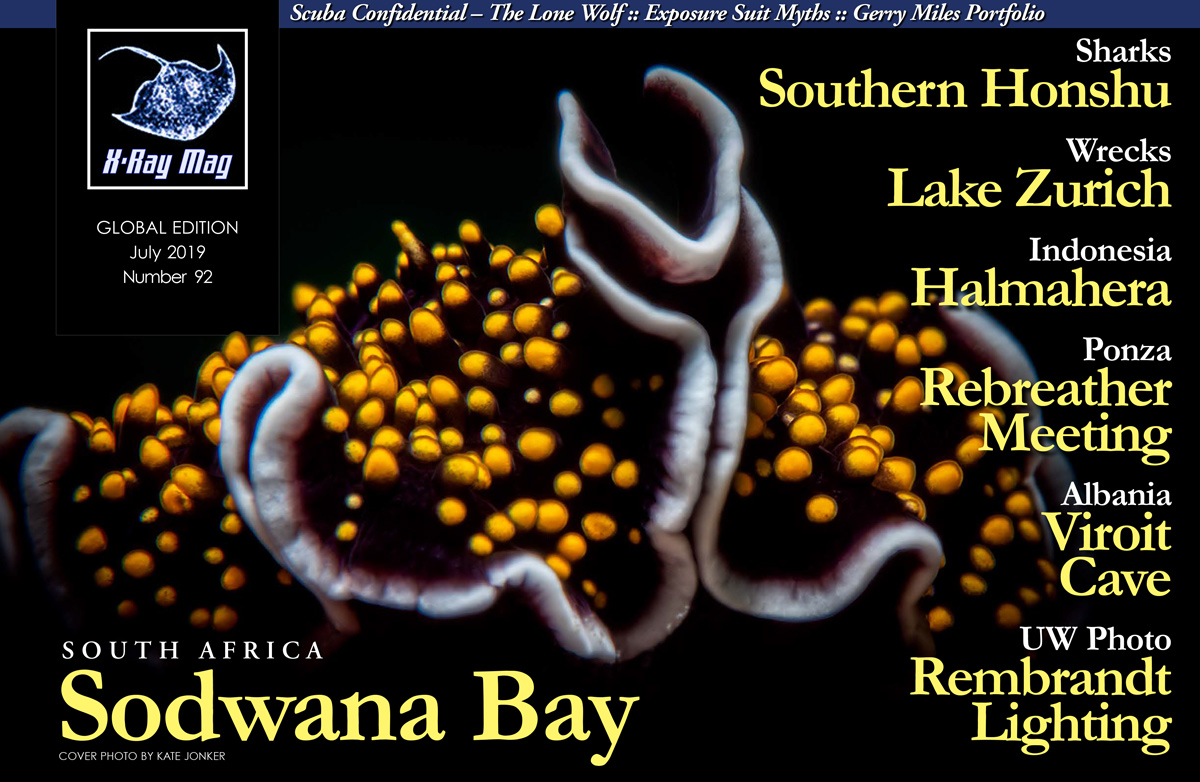Diving at a location where only few have gone before is every diver’s dream. Viroit Cave in southern Albania is such a place.
Contributed by
Factfile
Having dived over 400 wrecks, Vic Verlinden is an avid, pioneering wreck diver, award-winning underwater photographer and dive guide from Belgium. His work has been published in dive magazines and technical diving publications in the United States, Russia, France, Germany, Belgium, United Kingdom and the Netherlands. He is the organizer of the tekDive-Europe technical dive show. Please visit: tekdive-europe.com.
Located near the old town of Gjirokaster, Viroit Cave has been on my list of special dive locations I have wanted to visit for a long time. Unfortunately, there was not a lot of information available on the Internet about diving in this country. And regarding cave diving in Albania in particular, there was absolutely nothing. Even for a European country, it was a dark spot on the map.
My desire to dive at this unique location was stirred by a short film made by a Polish dive team. The film clearly showed the spectacular underwater landscape of the cave, with crystal-clear water. I decided to take a chance and put together a team of divers to go to Albania to dive and explore this cave. After thorough preparation, the travel arrangements were made. We were ready to leave for Albania with our team of three divers and one non-diver.
Two days in the car
As we knew there were no local dive shops in the area, we decided to take along all of our dive and film equipment in a large paneled van. Karl van der Auwera and I would dive with rebreathers, and Tom van Herp would make the dives on open circuit.
Our plan was to cross the distance from Belgium to Albania in two days. In total, we had to travel approximately 2,400km. We planned our first stop in Croatia, where we arrived after a drive of more than 18 hours. The next day, we still had to drive another 800km. However, the roads were not as good on this stretch, so it took us another 15 hours to get to our destination. It was late in the evening when we arrived at our hotel in Gjirokaster. We had pre-booked our hotel rooms, so our check-in at the reception desk went smoothly. During our stay, the hotel owners were very accommodating, and the service was excellent.
Reconnaissance and the first dive
The next day, we were up early to reconnoitre the dive site at Viroit Lake. Before our arrival, I had received some information from a Polish diver about the location and where we should make our entry into the water. This was no trivial matter, as the lake was fairly large.
Upon arrival at the lake, it became apparent that we could not drive the car up to the water entry point. The road was blocked by a barrier, which was locked with a padlock. The distance from the parking area to the entry point was roughly 200m. It would have been a hellish job getting all the dive and film equipment to the entry point. After some negotiation with the local authorities, the barrier was opened for us.
At first sight, the conditions in the lake looked hopeful. However, the water flowing from the cave had a significant current. The visibility, on the other hand, was spectacular. One could see 30m straight into the depths. We quickly prepared ourselves for the first dive.
The banks and edges of the lake were densely overgrown with aquatic plants, but we quickly found a place where it was less so. The first one of our team to go down was me, and after I swam through the plants, I could see the sloping banks for the first time. It was an impressive sight. The water was crystal clear, and the visibility was at least 40m. The sun's rays penetrated the smooth surface of the water and reached down to the lake bottom at 30m.
I immediately started filming, and when my buddies were ready, we descended together to the bottom of the lake. The entrance to the cave was at a depth of approximately 30m, but it soon became apparent that the current was too strong to enter without a guideline. We therefore immediately decided to continue our first dive outside the cave. Although we changed the initial plan, it turned out to be a fantastic experience. The dive site was really indescribable, with the swaths of vegetation and the unusual rock formations.
Safety first!
After the first dive, our team held a meeting to discuss how we should swim into the cave. We decided to put a guideline inside, which would enable team members to pull themselves inside, along with their cameras. The task of laying the guideline and fixing it inside the cave was to be executed by Karl (my dive buddy of many years).
I myself would wait at the entrance, in case problems arose. However, it was only a short distance into the cave where the current was found to be the strongest. Karl had attached the guideline to a large boulder a short time later. The rest of the team could now swim into the cave fairly easily for further exploration. However, with a large camera in hand, it was still a chore for me to swim against the current. Yet, the sight of the beautiful rock formations made up for the extra effort.
Once inside the cave, we had to swim a long way through a lengthy corridor to get to a larger chamber. Here, the corridor made a steep decline. It was a vertical descent for us, in very clear water. The color of the rock formations varied from dark brown to light yellow. With our powerful lamps, we were able to illuminate large parts of the cave, and this produced spectacular video images.
Our team descended to a maximum depth of 60m. In the area surrounding Viroit Cave, there were absolutely no facilities available to treat decompression incidents, so we wanted to stay on the safe side. We also limited our bottom times, as one of the team members was diving open circuit.
Diving in a photo studio
Truly, Viroit Cave was like a photo studio set up especially for the underwater photographer. We were in luck with the conditions of the site. We had nice weather and lots of sunshine. On top of that, there was almost no wind, which allowed the sun’s rays to easily penetrate the surface of the water.
During our subsequent dives, we explored some side corridors of the deep shaft. There was a portion of the vertical shaft that sloped upwards, where there was an air space. However, there was no time to explore all these areas.
The current inside the cave was not strong at all, which enabled us to swim around easily. We also got the sense that the current became less and less over the following days. Due to the constant flow, visibility in the cave was always optimal. But when we entered into the water, we had to be careful not to touch too many of the underwater plants. Any plants that were disturbed remained floating around in the water column, which was noticeable in the photos we reviewed after each dive.
After our dives, we were interviewed by various Albanian television stations, which were interested in our activities. All of the people with whom we came into contact in order to complete our expedition were very helpful. In the days following our dives at Viroit Cave, we had the opportunity to see some sights and museums in the area, which were definitely worth the visit. Albania will surely become one of the hotspots in Europe for diving in the coming years! ■





























































